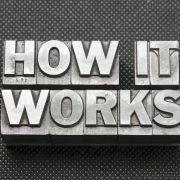How to Utilize Private Lending in a Self-Directed IRA for Retirement
Since a Self-Directed IRA opens up all sorts of non-traditional retirement investment possibilities—many of which help investors hedge against the stock market—one of the most popular options is to use private lending and notes. When the economy becomes troubled and banks become more conservative with the types of loans, they are willing to make, it opens a new possibility as well: the ability for private lenders to make money in a down economy by becoming competitive with these loan vendors. But how can an investor use a private loan to help build a retirement portfolio, and what do they need to know before they start? Here are some of the essentials:
- Private loans can be easier to obtain. The process of applying for a bank loan can be cumbersome for many borrowers, particularly those who have issues getting credit thanks to past problems. But if a Self-Directed IRA investor is able to identify a high-quality borrower who can pay back an interest rate that’s even higher than the going market rates at the banks, it may prove profitable. And because private loans can be easier to obtain for the borrower, they may be willing to pay this premium—in the form of higher interest—back to the IRA of the investor. This incentivizes retirement investors to find high-quality candidates while streamlining the process. The result is a new source of funding for private borrowers and more ample returns for the investor.
- A wide variety of options. There is no single loan that applies here. In fact, a Self-Directed IRA lender may use a variety of lending investment options, including secured notes, unsecured notes, private business loans, car notes, and “hard money” lending. Other popular types of loans—such as bridge loans—are also available. This wide variety of options means that not only does a Self-Directed IRA holder have the advantage of diversifying their private loan assets through different types of loans, but they can write the loan to fit the individual situation that the borrower needs. This makes it more likely that the borrower will pay back the interest rates the loan demands.
- Choice. When you hold a Self-Directed IRA, you will have a lot of power when it comes to your choices with private loans. For example, you can choose whether promissory notes are secured or unsecured with a deed of trust. This is why it’s so important for Self-Directed IRA lenders not only to understand the different terms involved, but to know how these terms might help them secure better loans for themselves and their borrowers.
- Diversification. Imagine going beyond the stock market for a wide variety of retirement assets. Imagine having passive income coming to your account in the form of interest payments. These situations do require that you find a trustworthy borrower who will have the financial capability to pay you back. After all, no investment is without risk. But diversification can help you go beyond the typical methods of retirement investing so you cast a wider net with your portfolio.
What happens if someone does not pay back? In that case, foreclosure, collections, and defaulted notes become the responsibility of the Self-Directed IRA account holder. In other words, you. You can, however, utilize a note servicing company to help simplify this process so that you’re not constantly monitoring your own account for payments and what to do if someone does not pay you back.
Interested in learning more about private lending in a Self-Directed IRA? Contact American IRA, LLC at 866-7500-IRA (472) for a free consultation. Download our free guides or visit us online at www.AmericanIRA.com.






